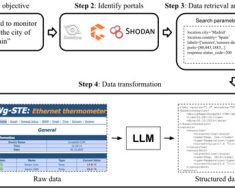
Artificial General Intelligence (AGI) has long been thought of as the pinnacle of artificial intelligence (AI), representing machines that can perform any intellectual task a human can, quickly and without error. The rapid acceptance of AI we have seen thus far has mostly been due to the public release of ChatGPT. Whilst the technology is certainly impressive. It does, however, have its limitations and is defined as a very narrow form of AI, due to its inability to think outside of anything other than predefined tasks.
The transition towards AGI
Whilst the timeline for the transition towards AGI is often projected as not being before 2030, several emerging factors suggest that AGI might actually be closer than anticipated. Amongst these are shifting investment priorities from the metaverse towards AI. Part of this is due to adjusted net zero targets. This has caused a widespread pivot in investment from immediate carbon savings to emerging technologies – powered by AI – that path a sustainable road to carbon neutrality.
Global efforts to combat climate change have accelerated the demand for more efficient, intelligent systems capable of optimising energy use and reducing carbon footprints. However, many overly ambitious carbon-neutral targets have been reset towards now achieving net-zero emissions by 2050. Whilst the urgency has become muted, achieving the goal still necessitates the development of advanced AI systems capable of managing complex energy grids, optimising resource distribution, and innovating in green technologies whilst being considerate of rising costs.
A solution to global challenges
Traditional AI systems such as Chat GPT lack the adaptive intelligence required to manage the multifaceted challenges now facing society. AGI, with its broader understanding and vast learning capabilities, presents a far more promising solution to current global challenges. Its ability to integrate and analyse vast amounts of data across various domains will drive unprecedented advancements in renewable energy management, smart grid technology, and sustainable urban planning.
This will lead to a number of government-led investments in the form of grants and research funding to ensure that their country is at the forefront of AI technologies and able to not only attract the world’s best and brightest but avoid the risk of brain drain to other countries.
A pathway towards advanced AI
The tech industry’s investment landscape is also evolving. The initial hype around the metaverse has begun to wane. Mark Zuckerberg himself has significantly redirected Meta’s focus from the metaverse towards AI. He is now investing heavily in building sophisticated AI systems for the company. One of his key strategies involves making these AI systems open source. By doing so, he aims to accelerate innovation and collaboration within the AI community, fostering a more rapid progression towards AGI.
Open source initiatives are crucial in this context because they democratise access to advanced AI tools and datasets, allowing researchers and developers worldwide to contribute to AGI’s development. This collaborative approach is to be encouraged. It not only speeds up technological advancements but also ensures a diversity of thought and application.
Improving urban environments
Another critical driver pushing us closer to AGI is the move towards smart buildings and environments. As urbanisation intensifies, there is a growing need for intelligent infrastructure that can efficiently manage resources, enhance occupant comfort, and reduce environmental impact. Smart buildings leverage AI to optimise heating, ventilation, air conditioning, lighting, and security systems. Often in real-time with machine learning algorithms being applied to make these buildings even more intelligent moving forward.
The complexity and interconnectedness of these systems require intelligence that goes beyond current AI capabilities. AGI’s potential to learn and adapt autonomously makes it an ideal candidate for managing such smart environments.
Of course, smart environments extend beyond individual buildings to encompass entire cities. The concept of smart cities, where data from a number of sources such as traffic patterns, energy usage, waste management, and public services are integrated and analysed, demands a level of intelligence that AGI could provide. There is no doubt that such intelligent systems could significantly improve urban living conditions, making cities more sustainable and resilient in the face of climate change.
The future is bright
The convergence of urgent environmental goals, shifting technology investments, and the rise of smart environments suggests that AGI might be closer than previously thought. The pressing need for carbon neutrality by 2050 is driving innovation in AI, while the pivot from the metaverse to more immediate AI applications indicates a strategic realignment of resources towards technologies with tangible benefits. The future is bright. Mark Zuckerberg’s investment in open-source AI systems exemplifies the collaborative spirit needed to achieve AGI and is removing many of the current barriers to entry. By harnessing the collective intelligence of the global research community, we are likely to see rapid advancements in AI capabilities that far eclipse the AI we know of today.


![Towards Language-Driven Video Inpainting via Multimodal Large Language Models. (arXiv:2401.10226v1 [cs.CV]) Towards Language-Driven Video Inpainting via Multimodal Large Language Models. (arXiv:2401.10226v1 [cs.CV])](https://aigumbo.com/wp-content/uploads/2023/12/arxiv-logo-fb-235x190.png)
